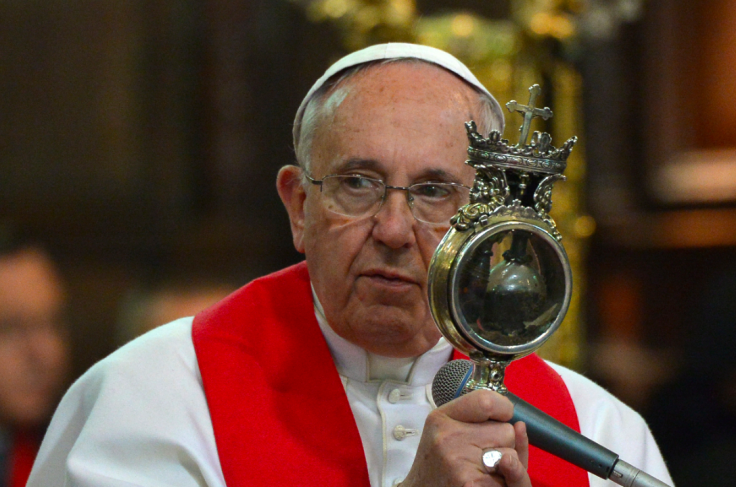San Gennaro Feast 2015: History, Facts, Trivia And Why Italian Americans Celebrate

The Feast of San Gennaro is finally here! That means vendors are lined up along Mulberry Street in New York City-- and around the country-- to sell Italian American delicacies like sausage and peppers and cannoli. But there’s a deeper meaning to this annual celebration.
Below are 7 facts about why celebrators flock to the Feast of San Gennaro courtesy of Life in Italy and Italian Heritage.
1. San Gennaro is the patron saint and protector of Naples, Italy. And when Neapolitans immigrated to the United States in the 20th century, they also brought along their traditions.
2. The first Feast of San Gennaro was celebrated on Sept. 26, 1926 and it only lasted one day. It has since blossomed into an 11-day feast when street vendors sell sweet and savory treats in Little Italy.
3. San Gennaro was a bishop and a martyr from Pozzuoli who was later canonized by the Catholic Church.
4. San Gennaro was executed on Sept. 19, 305 A.D by order of Emperor Diocletian, who persecuted Christians during the forth century.
5. After his death, a woman named Eusebia collected his blood in two vials. The liquefaction of the blood is one of the most important parts of the Feast of San Gennaro and the reason why he is the patron saint of Naples.
6. According to tradition, when San Gennaro’s body was moved to the Italian city by bishop Severus, Eusebia showed up with the two vials of blood. When they were near the saint’s head, the liquid saved in the ampoules melted "as if the same day it flowed out of the saint's body."
7. Today, the vials are presented in Naples on Sept. 19, and two other dates each year. If the blood liquefies it is a sign of good luck. If it takes a long time, or doesn’t happen at all, it is a bad omen.

Follow me on Twitter @mariamzzarella
© Copyright IBTimes 2024. All rights reserved.






















